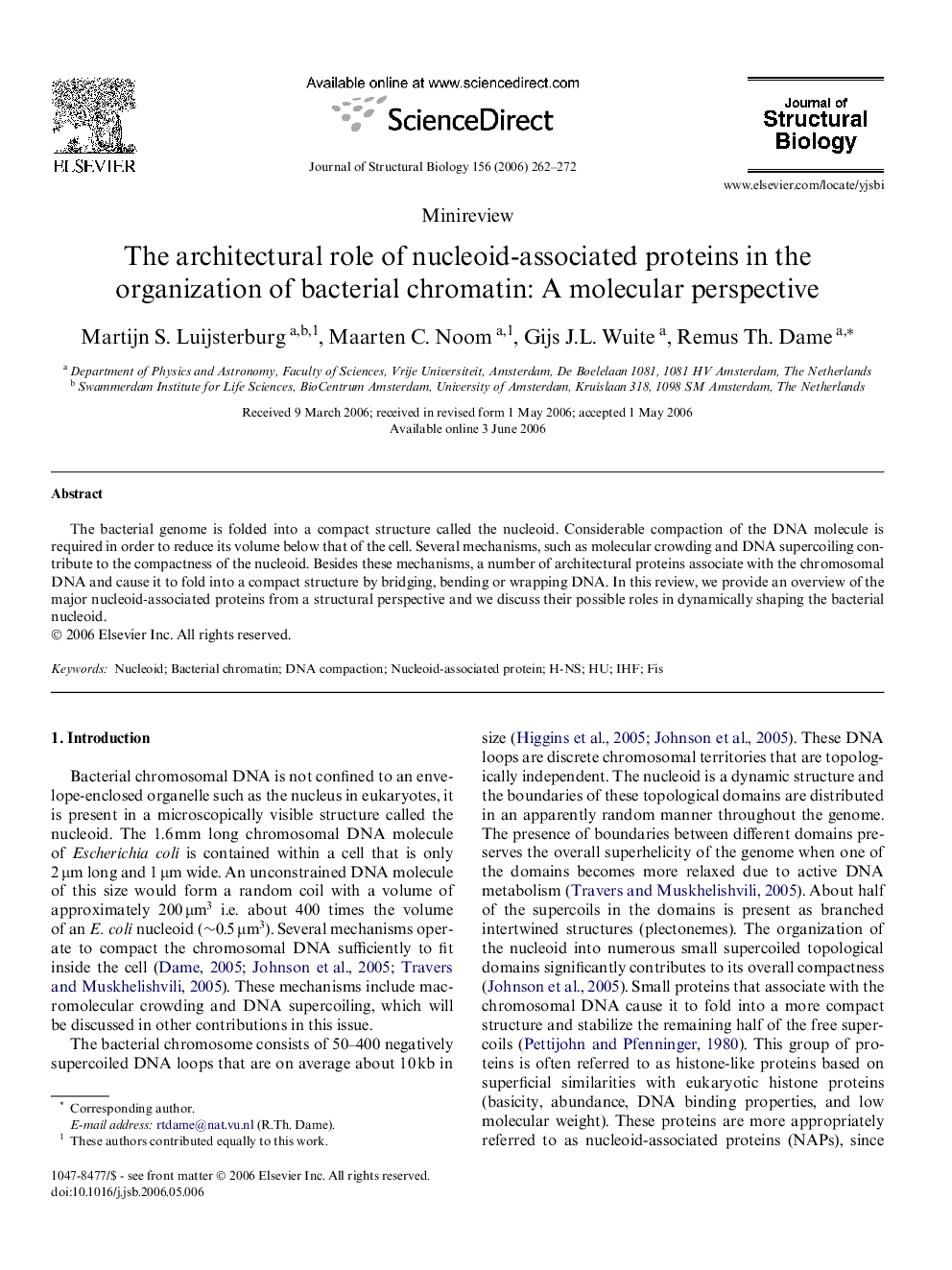| Article ID | Journal | Published Year | Pages | File Type |
|---|---|---|---|---|
| 2829646 | Journal of Structural Biology | 2006 | 11 Pages |
Abstract
The bacterial genome is folded into a compact structure called the nucleoid. Considerable compaction of the DNA molecule is required in order to reduce its volume below that of the cell. Several mechanisms, such as molecular crowding and DNA supercoiling contribute to the compactness of the nucleoid. Besides these mechanisms, a number of architectural proteins associate with the chromosomal DNA and cause it to fold into a compact structure by bridging, bending or wrapping DNA. In this review, we provide an overview of the major nucleoid-associated proteins from a structural perspective and we discuss their possible roles in dynamically shaping the bacterial nucleoid.
Related Topics
Life Sciences
Biochemistry, Genetics and Molecular Biology
Molecular Biology
Authors
Martijn S. Luijsterburg, Maarten C. Noom, Gijs J.L. Wuite, Remus Th. Dame,
